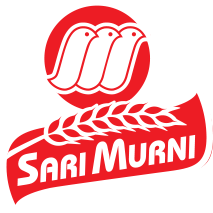Any kind of ready-to-eat food that does not require time-consuming preparation can be referred to as snack food. Throughout history, people have had small portions of fruit and vegetables or nuts between meals to refill their energy and satisfy their hunger. Things have changed significantly with the appearance of processed, packaged snacks in the 19th century. Snacks have become an important part of daily diet nowadays, due to their indulgent flavors and convenience. Also, the fast-paced tempo of living has forced people to seek alternatives to regular meals. Thus, they turned to snacks as an easily accessible and socially acceptable dieting option that can replace a regular breakfast, lunch, or dinner.
Snack food is a broad category, and people tend to divide snacks into different types, depending on various aspects. Besides the main division between sweet and savory snacks, people categorize snack food according to food processing techniques applied in its production. The first generation includes products made of peanuts, nuts, or dried fruit snacks. However, most savory snacks, like corn chips, puffed corn products, balls, and curls made from extruded materials, fall into the second generation of snack products. Second-generation products are known as high fiber, high protein, low-calorie snacks. The third-generation snack refers to fried and flavored snacks produced from extruded pellets.

Snack Variations
Variety of Processed Snack Foods
Salty Snacks
Over half of the total sales of snacks are accounted for by salty snacks, making them a large part of today’s consumer’s diet. What drives the growth of salty snacks in the market are mainly flavor trends and convenience factors. Full and intense-flavor snacks remain a significant trend in the salty snack market, as well as the convenience, which influences the shapes and packaging of salty processed snacks
The salty processed snack market is composed of the following segments:
- Pretzels. Pretzels are baked snacks that are twisted into a knot-like shape. Pretzel dough is made from brown sugar, wheat flour, yeast, and water. Before pretzels are baked, they are dipped into a sodium bicarbonate, sodium carbonate, or sodium hydroxide solution and sprinkled with coarse salt. The pretzel gets its distinctive flavor and brown color during the baking process. It appeared on the snack food market at the beginning of the 20th century and gained additional attention thanks to the automatization of the production process. “Rold Gold,” advertised as the “American No. 1 Pretzel” brand, was founded in 1917 as a family business and soon expanded its operations across America. Nowadays, Rold Gold pretzels are categorized as lactose-free snacks that are mainly baked (not fried).
- Salted peanuts. Salted peanuts are one of the earliest processed snack foods. During the late 19th century, peanuts were sold as freshly roasted snacks at circuses, fairs, sporting events, and by street vendors. The most popular salted peanuts are salted in-the-shell, but consumers also enjoy salted peanuts with new flavors.
- Potato chips. According to numerous surveys, chips are the favorite snack in the United States, with 63% of participants eating them daily. At the same time, together with pretzels, they make $4 billion in retail sales annually. Chips were first sold on the streets and stored in barrels, where they couldn’t stay fresh for long. This solution to this problem was the revolutionary invention of the vacuum sealing technique that contributed to the further development of the snack food industry. Apple chips and banana chips have appeared on the snack market recently for those seeking healthy chip versions. You can even get potato chips without salt nowadays, but consumers are fonder of the salty chips snack.
- Popcorn. Popcorn is short for popping corn. It is a type of corn that explodes from the kernel when heated and puffs up, getting its recognizable shape. It is naturally low in fat and calories, high in fiber, sugar-free, and contains no sodium. Unless you’re limiting carbohydrates, popcorn is the perfect snack.
Sweet Snacks
Sweet snacks are divided into four categories: hard candy, chocolates, baked products, and frozen sweets. However, the first commercially successful sweet snack that appeared on the American market did not fall into any of these. Namely, “Cracker Jack” was a sweet treat made of peanuts and popcorn combined with molasses.
- Candy. Candy usually refers to sugar candy – confection made from a concentrated solution of sugar dissolved in water or milk, which forms a syrup to which different flavorings can be added. Hard candy comes in an endless variety of textures – from hard and brittle and soft and chewy. Gumdrops, rock candy, jelly beans, praline, toffee, caramel, fudge, peppermint sticks, candy canes, chocolate coated peanuts or raisins, peanut brittle, and hard candy are a few examples of candy snacks that are sold under the generic name – candy. Hard candy snacks like lemon drops and peppermints were homemade in Europe in the 18th century. When it comes to America, this kind of sweet snack became popular during the 19th and 20th centuries, with hundreds of different hard candies appearing on the market. “Saltwater Taffy” and “Life Savers” were among the first hard candy brands in the United States.
- Chocolate. Chocolate includes a variety of processed snack foods produced from the seed or bean of the cacao tree. Because of their intense bitter taste, the seeds must be fermented. After fermentation, the seeds are dried, cleaned, and roasted. The shell is then removed from the seed to produce cacao nibs, which are ground and liquefied. The result is chocolate liquor (pure chocolate in liquid form). The liquor can be processed into cocoa butter or cocoa solids. Pure chocolate contains mostly cocoa butter and cocoa solids in varying proportions. Most of the chocolate we consume today is pure chocolate combined with sugar.



